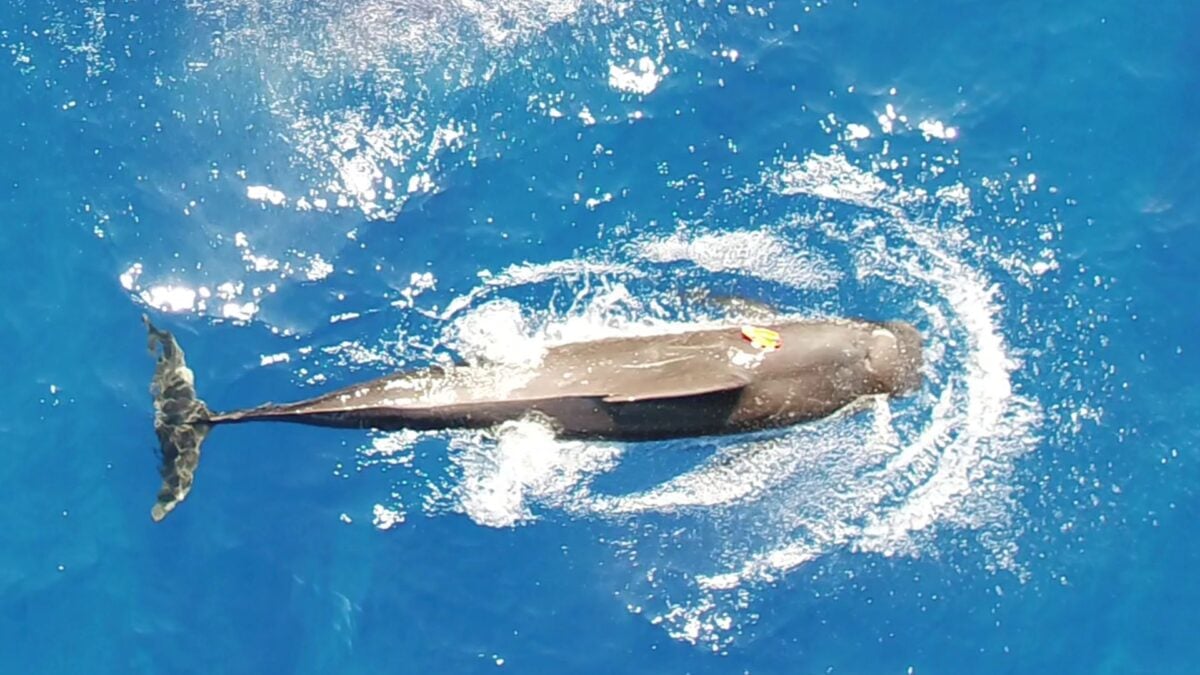Here’s some important life advice: do not try to challenge a short-finned pilot whale (Globicephala macrorhynchus) to a squid-eating contest. Research out today shows that these marine mammals can pack away hundreds of live calamari a day.
For the first time ever, a large international team of researchers has quantified the diets of short-finned pilot whales living in the waters near Hawaii. They found that a single whale can consume up to 200 squid a day, while whales in the region may collectively eat around 416 million squid a year. Despite the hefty numbers, the local squid population is doing just fine, as are the whales that feast on them, the researchers say.
“Luckily for us and for the pilot whales, squid reproduce quickly and have high growth rates, meaning the pilot whales have seemingly hit on a reliable food source, at least for the time being,” lead study author William Gough, a postdoctoral researcher at the University of Hawaii at Mānoa’s Marine Mammal Research Program, told Gizmodo.
Data deficient
Gough and his team weren’t really trying to solve the diets of these whales, at least not at first.
They were initially hoping to learn more about the false killer whales (Pseudorca crassidens) in the region. But these animals—actually a species of dolphin—proved much harder to tag than they expected. During their fruitless attempts to track the false killer whales, they kept running across large pods of pilot whales offshore. These encounters eventually gave them the idea for a new study, one aiming to fill in the gaps on what we know about these whales.
“We did a bit of digging and, as it turns out, the Hawaiian population of short-finned pilot whales is considered to be ‘data deficient’ by the International Union for Conservation of Nature,” Gough said. “So any additional data on their movements or behavior could greatly benefit conservation and management efforts of this species in Hawaiian waters.”
Short-finned pilot whales are one of two species of pilot whales (the other species being—big shocker—the long-finned pilot whale). They’re commonly found in tropical and temperate waters throughout the world, with roughly 8,000 whales living near Hawaii. Though their population numbers are generally strong, they do face certain human-made threats, such as vessel strikes, fishing gear entanglements, and climate change, the latter of which may be pushing them further into northern waters.
The whales primarily subsist on a steady diet of squid, though their exact caloric needs—and how many squid it would take to meet these needs daily—were a mystery until now.
How much does a pilot whale eat?
To figure out a short-finned pilot whale’s caloric intake, Gough says, the team had to combine data from a variety of sources, including movement data from short-lasting tags, daily feeding rates from satellite tags, body measurements collected via aerial drones, and sifting through the stomachs of unfortunate whales that ended up stranded on land.
Once the team pulled all this data together, they estimated that a typical whale will eat between 82 and 202 squid a day. To meet their energy needs, a whale will have to consume an average of 140 squid a day. Annually, that’s about 74,000 squid per whale. For all the whales in the area, that amounts to about 88,000 tons of squid eaten every year.
The team’s findings were published Thursday in the Journal of Experimental Biology.
Diet trackers
This research isn’t just providing a nifty bit of new trivia to share with your whale-loving friends.
The same techniques the team devised to calculate these whales’ diets can also be used for other whales and dolphins, according to Gough. And they’re next planning to study plenty more.
“Over the last 10-15 years, researchers have built some really impressive tag and drone datasets for a variety of whale and dolphin species, so we’re hoping to follow up this current study by using our comparative analytical framework on species ranging in size from harbor porpoises up to blue whales,” Gough said.
That all sounds great. I just hope scientists never try to figure out how many wings I eat during the MLB baseball season.

